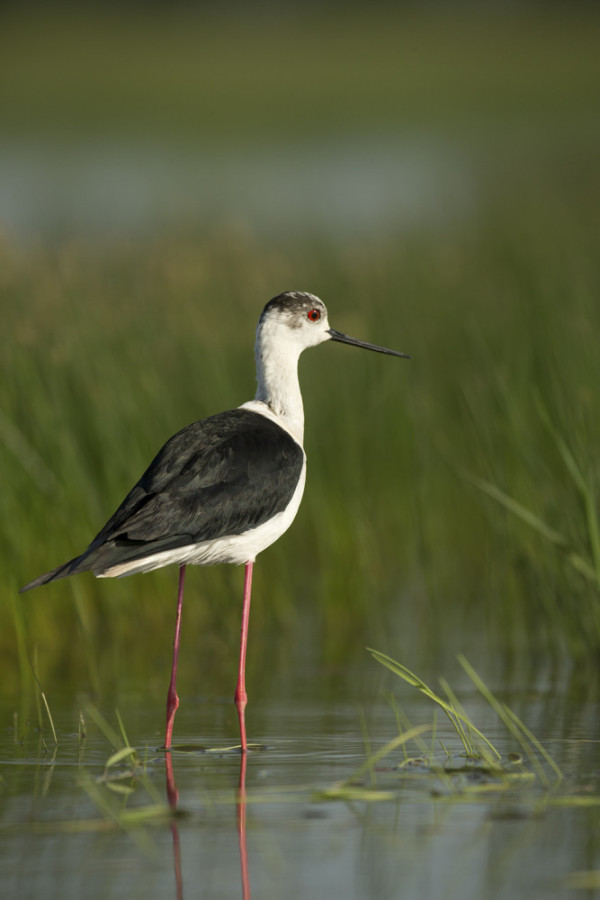
BirdTrack migration blog (Mid-February — Mid-March)
Scott’s role includes the day-to-day running of BirdTrack: updating the application, assisting county recorders by checking records and corresponding with observers.
Relates to projects
While the peak of spring migration is still a couple of months away, the signs that migration has started are all around if you know what to look out for. The start of spring migration across Britain and Ireland generally involves species that we are familiar with, and to some degree we don’t often notice that migration is taking place. Some of the Song Thrushes and Robins that breed in the UK will spend the winter in Portugal and Spain before returning in early spring, so the birds you see in your garden during the winter could be different to the ones you see in the summer. Late February is also the time of year that species such as Linnet and Meadow Pipit that have wintered in south-western Europe begin to head back north and east, ready for the forthcoming breeding season.
Interestingly for the time of year, Teal, Wigeon, Shoveler and Pintail were all reported above the historical average with increases in reports in the last week. These increases could be a result of calm weather and mild conditions allowing birds to migrate slightly earlier than normal.
BirdTrack reporting rate graph for Teal showing an increase in sightings in the last couple of weeks.
Several winter-visiting species have already started to head back to Fennoscandia, Iceland and Arctic Russia, with reports of Redwing, Brambling and Whooper Swan all reducing in the past couple of weeks. At coastal locations, this is the time of year to look out for these departing visitors as they move from inland locations to coastal areas in readiness for their impending sea crossings.
After what has been a disappointing winter for white-winged Gulls, the trend continued over the last month as reports fell away for both Iceland and Glaucous Gulls (both species tend to head back north in late February and early March although some birds, especially those in their first winter, can linger into April or May).
Rarities in the last month included a Black-faced Bunting in Shropshire, Brunnich’s Guillemot in Shetland, Harlequin Duck in the Outer Hebrides, Baikal Teals in Gwynedd, Powys and Nottinghamshire, and White-Winged Scoter in Mayo and Lothian.
The colder weather forecast across much of Europe for the start of March could slow the northward progression of some early arriving birds.
Looking ahead
Many of the species that will be on the move at this time of year may not be what you think of as migrant birds. Song Thrush, Robin, Linnet, Meadow Pipit and Lesser Black-backed Gulls will all be arriving back across Britain and Ireland in the next few weeks, having wintered as far south as the west coast of Africa in the case of Lesser Black-backed Gulls. Colour ringing and GPS tracking of Lesser Black-backed Gulls has highlighted the extent of this migration and showed just how far some of the British breeding population migrate in the winter. As the British/Irish subspecies birds (graellsii) arrive back, those from northern and central Europe (the darker-backed intermedius and fuscus subspecies) that have wintered here will move back to their breeding grounds. A similar pattern occurs in Black-headed Gulls. Birds that have winterered here will be heading back to their breeding grounds as far east as Poland and the Baltic States, while some of 'our' Black-headed Gulls will be returning after wintering in West Africa. If you spot a gull with a colour ring it is well worth reporting it to find out where it has come from — you may be surprised!

Waders, such as Redshank and Curlew, begin to leave favoured wintering areas like estuaries and head back to their breeding areas and establish a territory. Getting back to the breeding areas early can give birds a head start on claiming the best territories for the breeding season over those birds that arrive later in the spring. Older birds tend to be the first to arrive back, with the young from last year arriving later for their first breeding season.
Seabirds are some of the first species to return to their breeding cliffs. Having spent the winter offshore, Guillemots, Razorbills and Puffins all begin to arrive back at the end of February. The timing of this arrival can vary from colony to colony, with some colonies arriving back a couple of months before others. Gannets and particularly Fulmars also return to breeding sites at this time of year. In fact, Fulmars tend to only leave their nesting cliffs for a few weeks each year, which enables them to keep their favoured nesting area from year to year.
The end of February generally sees the arrival of the more typical summer migrants — the first Sand Martins, Swallows, Wheatears, Little Ringed Plovers and Garganeys are all likely given the right conditions. Already, there has been an increase in the number of Swallows in Portugal and western Spain as birds arrive from Africa. Interestingly, Sand Martins have yet to arrive in Europe; they typically arrive across Britain and Ireland before the bulk of Swallows. With colder weather forecast across much of Europe for the start of March, this will slow the northward progression of some of the early arriving birds.
This time of year can also turn up the occasional scarcity and, with Black-winged Stilts occurring more frequently in recent years, the odd early March occurrence is not out of the question. Other typical early spring rarities include Great-spotted Cuckoo, Alpine Accentor, Alpine Swift, Black Kite, Dark-eyed Junco, Hoopoe and Red-rumped Swallow.









Share this page